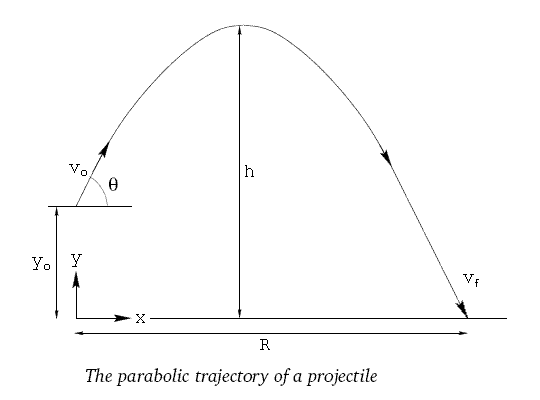|
The motion of an object moving near the surface
of the earth can be described using the equations:
(1): x = xo + vxo·t
(2): y = yo + vyo·t - 0.5·g·t2
The calculator solves these two simultaneous equations to
obtain a description of the ballistic trajectory. The horizontal
and vertical components of initial velocity are determined
from:
vxo = vo·cos θ
vyo = vo·sin θ
Then the calculator computes the time to reach the maximum
height by finding the time at which vertical velocity becomes
zero:
vy = vyo - g·t
trise = vyo/g
Maximum height is obtained by substitution of this time into
equation (2).
h = yo + vyo·t - 0.5·g·t2
Next, the time to fall from the maximum height is computed
by solving equation (2) for an object dropped from the maximum
height with zero initial velocity.
0 = h - 0.5·g·t2
tfall = √(2·h/g)
The total flight time of the projectile is then:
tflight = trise + tfall
From this, equation (1) gives the maximum range:
range = vxo·tflight
The projectile speed at impact vf is determined
by applying the Pythagorean Theorem:
vf = √(vxf2 + vyf2)
In which:
vxf = vxo
vyf = -g·tfall
Copyright © 2004, Stephen R. Schmitt
|

